Contradictiontonature - Sapere Aude

More Posts from Contradictiontonature and Others

New insights into the molecular basis of memory
Scientists from the German Center for Neurodegenerative Diseases (DZNE) in Göttingen and Munich have shed new light on the molecular basis of memory. Their study confirms that the formation of memories is accompanied by an altered activity of specific genes. In addition, they found an unprecedented amount of evidence that supports the hypothesis that chemical labels on the backbone of the DNA (so-called DNA methylation) may be the molecular basis of long-term memory. These findings are reported in “Nature Neuroscience”.
The brain still harbours many unknowns. Basically, it is assumed that it stores experiences by altering the connections between brain cells. This ability to adapt – which is also called “plasticity” – provides the basis for memory and learning, which is the ability to draw conclusions from memories. On a molecular scale these changes are mediated by modifications of expression of specific genes that as required strengthen or weaken the connections between the brain cells.
In the current study, a research team led by Dr. Stefan Bonn and Prof. André Fischer from Göttingen, joined forces with colleagues from the DZNE’s Munich site, to examine how the activity of such genes is regulated. The scientists stimulated long-term memory in mice, by training the animals to recognise a specific test environment. Based on tissue samples, the researchers were able to discern to what extent this learning task triggered changes in the activity of the genes in the mice’s brain cells. Their focus was directed on so-called epigenetic modifications. These modifications involve the DNA and DNA associated proteins.
Epigenetic modifications
“The cell makes use of various mechanisms in order to turn genes on or off, without altering the DNA sequence itself. It’s called ‘epigenetics’,” explains Dr. Magali Hennion, a staff member of the research group of Stefan Bonn.
In principle, gene regulation can happen through methylation, whereby the backbone of the DNA is chemically labeled at specific sites. Changes in the proteins called histones that are packaging the DNA may also occur.
Hennion: “Research on epigenetic changes that are related to memory processes is still at an early stage. We look at such features, not only for the purpose of a better understanding of how memory works. We also look for potential targets for drugs that may counteract memory decline. Ultimately, our research is about therapies against Alzheimer’s and similar brain diseases.“
A code for memory contents?
In the current study the researchers found modifications, both of the histones as well as of the methylation of the DNA. However, histone modifications had little effect on the activity of genes involved in neuroplasticity. Furthermore, Bonn and his colleagues not only discovered epigenetic modifications in nerve cells, but also in non-neuronal cells of the brain.
“The relevance of non-neuronal cells for memory, is an interesting topic that we will continue to pursue“, says André Fischer, site speaker for the DZNE in Göttingen and professor at the University Medical Center Göttingen (UMG). “Furthermore, our observations suggest that neuroplasticity is to a large extent regulated by DNA methylation. Although this is not a new hypothesis, our study provides an unprecedented amount of supporting evidence for this. Thus, methylation may indeed be an important molecular constituent of long-term memory. In such a case, methylation could be a sort of code for memory content and a potential target for therapies against Alzheimer’s disease. This is an aspect that we specifically want to focus on, in further studies.”

R.I.P. Dr. Vera Rubin
As I write this, reports are spreading rapidly through the astronomy community of the death of Dr. Vera Rubin on December 25, 2016. If you don’t know who she was, or what she worked on, come sit by me and let me tell you a story about this lady.
It was at one of the first meetings of the American Astronomical Society I attended. I was a graduate student and giving a talk about outreach and amateur astronomy. I was scared to death because, hey, it was me, a lowly student giving a talk to all these exalted astronomers. A woman sat in the front row and smiled at me as I shuffled the papers on the podium. The room filled and then the session chair gave me the signal that my 10 minutes had started. I plunged into my talk.
At the end, a few people asked questions, everyone clapped politely, and the next person stepped up to the podium. I fled the room to catch my breath. The woman followed me out and asked if I’d like to get a cup of coffee. At the same moment my advisor came out and said, “Oh, I see you’ve met Vera Rubin”, and he proceeded to introduce me to her before being collared by someone else for a chat. Dr. Rubin and I went to get coffee, and for the next 30 minutes or so she asked me all about my work and what I hoped to do when I graduated. It was a wonderful experience.
Over the years we met here and there, and I learned more about her work with galaxy rotation studies and the existence of dark matter. I found it fascinating, as so many people do, and followed her research with interest. When I was asked to write a book about astronomy, one of the directions I got from the editors was to include some bios of “seminal” astronomers. Dr. Rubin was one of those I chose. In retrospect, I wish could have done a book on her work instead of simply a chapter.
I know that Vera Rubin didn’t work in a vacuum on dark matter — that, like Newton and every other astronomer has done — she stood on the shoulders of giants. Her work forged a new path in understanding dark matter and its affect on the universe. Now, she is a giant in her own right. Now, others will stand on her shoulders. Her insights and drive to understand the difficult “galaxy rotation problem” led directly to the theory of dark matter, and more recently to the confirming observations of its existence. It was a monumental achievement.
For her work, Dr. Rubin should have received a Nobel Prize. That didn’t happen and the Nobel physics committee should be thinking hard about why she was overlooked. She has been honored with many other prizes and awards for her insights, and she will be long remembered for her seminal contributions to astronomy.
RIP Dr. Vera Rubin, and deepest condolences to her extended family.
C.C. PETERSEN is a science writer and media producer specializing in astronomy and space science content.
Source: The Spacewriter
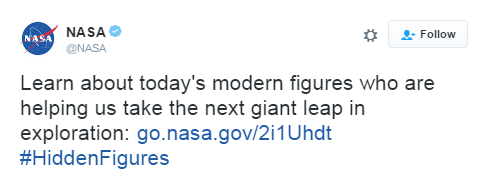
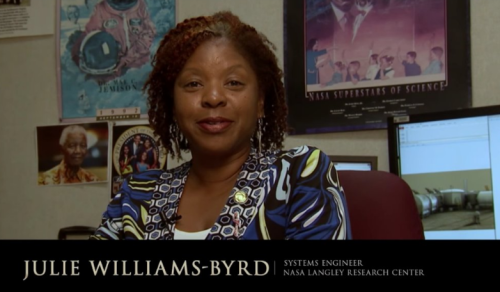
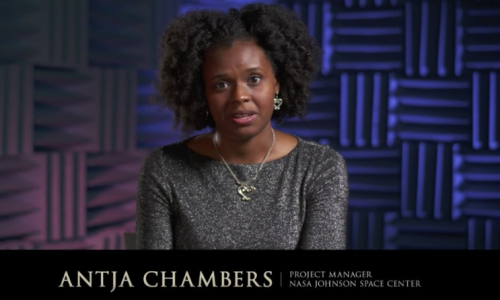
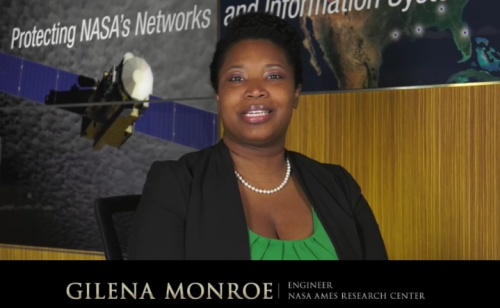
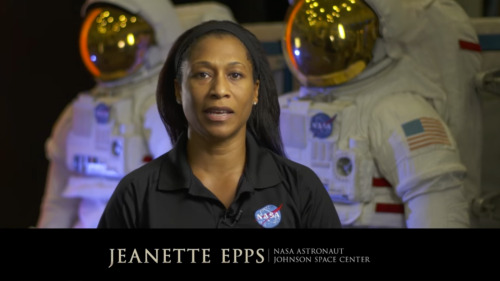
The film “Hidden Figures,” based on the book by Margot Lee Shetterly, focuses on the stories of Katherine Johnson (left, after receiving the Medal of Freedom in 2015), Mary Jackson and Dorothy Vaughan, African-American women who were essential to the success of early spaceflight. Today, NASA embraces their legacy and strives to include everyone who wants to participate in its ongoing exploration. “Progress is driven by questioning our assumptions and cultural assumptions,” NASA Administrator Charles Bolden says in a new video. “Embracing diversity and inclusion is how we as a nation will take the next giant leap in exploration.“
- Source
Let’s learn about today’s black heroes we all can look up to!

Astronomers Discover an Entirely New Kind of Galaxy
Astronomers at the University of Minnesota Duluth and the North Carolina Museum of Natural Sciences have identified a new class of ring galaxy. Named PGC 1000714, it features an elliptical core with not one, but two outer rings. It’s the only known galaxy of its kind in the known universe.

One of the largest icebergs ever recorded, packing about a trillion tons of ice or enough to fill up two Lake Eries, has just split off from Antarctica, in a much anticipated, though not celebrated, calving event.
A section of the Larsen C ice shelf with an area of 2,240 square miles (5,800 square kilometers) finally broke away some time between July 10 and today (July 12), scientists with the U.K.-based MIDAS Project, an Antarctic research group, reported today.
Continue Reading.
Dive deep into Episode 05 of #ShelfLife to discover the various technologies that have helped humans map the sky around us for eons.

From sundials to mega-powered modern telescopes, tools for stargazing allow us to understand the universe—and our place within it. Season 2 begins on November 1.










NASA unveils greatest views of the aurorae ever, from space in HD
“When the free electrons finally find the ions they bind to, they drop down in energy, creating an incredible display of colorful possibilities. Of all of them, it’s the oxygen (mostly, with the strong emission line at 558 nanometers) and the nitrogen (secondary, with the smaller line at a slightly higher wavelength) that create the familiar, spectacular green color we most commonly associate with aurorae, but blues and reds — often at higher altitudes — are sometimes possible, too, with contributions from all three of the major atmospheric elements and their combinations.”
The northern (aurora borealis) and southern (aurora australis) lights are caused by a combination of three phenomena on our world, that make our aurorae unique among all worlds in our solar system:
Outbursts from the Sun that can go in any direction,
Our magnetic field, that funnels charged particles into circles around the poles,
And our atmospheric composition, that causes the colors and the displays we see.
Put all of these together and add in a 4k camera aboard the ISS, and you’ve got an outstanding recipe for the greatest aurora video ever composed. Here’s the in-depth science behind it, too.
Who is more humble? The scientist who looks at the universe with an open mind and accepts whatever the universe has to teach us, or somebody who says everything in this book must be considered the literal truth and never mind the fallibility of all the human beings involved?
Carl Sagan

It’s nearly the season of the witch: time for some cauldron chemistry
Midwives and nurses sometimes came under suspicion because of their specialised knowledge and success - or failure - in treating those who were sick. These healing roles were traditionally taken on by women who, until around the turn of the nineteenth century, were excluded from formal medical training. However, many still practiced medicine in their homes and villages, and what they had learned came from shared knowledge and trial and error, rather than accepted official sources. A medical education might not have been a great help in any case. In the days before germ theory the causes of sickness and the reasons for recovery were not obvious. Any recoveries could be seen as miraculous … or the result of witchcraft.
Treating sickness and disease pre-germ theory was largely guesswork. All sorts of noxious compounds were administered to ailing individuals, and if they produced any effect on the body, be it vomiting, diarrhoea or sweating, it was seen as a good thing – and that was the practice of the so-called professionals. It is not hard to see how images of unofficial healers and herbalists (both men and women) stooping over boiling pots of herbs, roots and who-knows-what, could become a template for the image of a witch, especially when many of the concoctions they produced had such unpleasant effects on their patients.
Having said that, herbalists and traditional healers should not be dismissed as completely ignorant of the medical benefits of some of the plants and poultices they used. Some of the ingredients associated with traditional healing and witches’ potions have been found to be hugely beneficial to medicine once they have been isolated, tested and modified. Science has enabled us to identify the key components of some plants and test them to determine how and when they should be administered safely and effectively. Chemists have modified the structures of some of the compounds to reduce side-effects, make drugs more potent or lower their toxicity.
-
 musclesciencemusic liked this · 4 months ago
musclesciencemusic liked this · 4 months ago -
 necroticnurse reblogged this · 1 year ago
necroticnurse reblogged this · 1 year ago -
 schleyed liked this · 1 year ago
schleyed liked this · 1 year ago -
 7dcsandacinnamonroll liked this · 1 year ago
7dcsandacinnamonroll liked this · 1 year ago -
 tmedic liked this · 1 year ago
tmedic liked this · 1 year ago -
 okmed liked this · 2 years ago
okmed liked this · 2 years ago -
 harshatlophobhic liked this · 3 years ago
harshatlophobhic liked this · 3 years ago -
 labcoatangel liked this · 3 years ago
labcoatangel liked this · 3 years ago -
 chrlnmz liked this · 3 years ago
chrlnmz liked this · 3 years ago -
 castara-rose liked this · 4 years ago
castara-rose liked this · 4 years ago -
 koopstaknicca liked this · 4 years ago
koopstaknicca liked this · 4 years ago -
 fragdmi liked this · 4 years ago
fragdmi liked this · 4 years ago -
 badbluedayalways liked this · 4 years ago
badbluedayalways liked this · 4 years ago -
 maggiestarsmith liked this · 4 years ago
maggiestarsmith liked this · 4 years ago -
 newyorkindiancouncil reblogged this · 4 years ago
newyorkindiancouncil reblogged this · 4 years ago -
 beasee liked this · 4 years ago
beasee liked this · 4 years ago -
 musclesciencemusic reblogged this · 4 years ago
musclesciencemusic reblogged this · 4 years ago -
 usedtobefluphoria liked this · 5 years ago
usedtobefluphoria liked this · 5 years ago -
 medicoollabtech reblogged this · 5 years ago
medicoollabtech reblogged this · 5 years ago -
 anxietylasso liked this · 5 years ago
anxietylasso liked this · 5 years ago -
 sentio283 reblogged this · 5 years ago
sentio283 reblogged this · 5 years ago -
 sentio283 liked this · 5 years ago
sentio283 liked this · 5 years ago -
 makampino liked this · 5 years ago
makampino liked this · 5 years ago -
 thekingadriene liked this · 5 years ago
thekingadriene liked this · 5 years ago -
 mirrorballgaze liked this · 5 years ago
mirrorballgaze liked this · 5 years ago -
 demi-fool reblogged this · 5 years ago
demi-fool reblogged this · 5 years ago -
 demi-fool liked this · 5 years ago
demi-fool liked this · 5 years ago -
 a----rag reblogged this · 5 years ago
a----rag reblogged this · 5 years ago -
 a----rag liked this · 5 years ago
a----rag liked this · 5 years ago -
 milk-carton12 liked this · 5 years ago
milk-carton12 liked this · 5 years ago -
 dorkylittleweirdo reblogged this · 5 years ago
dorkylittleweirdo reblogged this · 5 years ago -
 dorkylittleweirdo liked this · 5 years ago
dorkylittleweirdo liked this · 5 years ago -
 chytea reblogged this · 5 years ago
chytea reblogged this · 5 years ago -
 clearestpurple reblogged this · 5 years ago
clearestpurple reblogged this · 5 years ago -
 natalystudies liked this · 5 years ago
natalystudies liked this · 5 years ago -
 gloominessence liked this · 5 years ago
gloominessence liked this · 5 years ago -
 angelofdef liked this · 5 years ago
angelofdef liked this · 5 years ago -
 103746281 reblogged this · 5 years ago
103746281 reblogged this · 5 years ago -
 103746281 liked this · 5 years ago
103746281 liked this · 5 years ago -
 amymanddy liked this · 5 years ago
amymanddy liked this · 5 years ago -
 icytarotea reblogged this · 5 years ago
icytarotea reblogged this · 5 years ago
A pharmacist and a little science sideblog. "Knowledge belongs to humanity, and is the torch which illuminates the world." - Louis Pasteur
215 posts
